What to do if my Panasonic CS-V9CKP Air Conditioner is leaking water from the indoor unit?
- MMelissa GarciaAug 12, 2025
If you notice a water leak from the indoor unit of your Panasonic Air Conditioner, call the dealer immediately.
What to do if my Panasonic CS-V9CKP Air Conditioner is leaking water from the indoor unit?
If you notice a water leak from the indoor unit of your Panasonic Air Conditioner, call the dealer immediately.
What to do if the circuit breaker switches off frequently when using my Panasonic CS-V9CKP?
If the circuit breaker switches off frequently when you are using your Panasonic Air Conditioner, call the dealer immediately.
What to do if my Panasonic CS-V9CKP remote control doesn’t work?
If the remote control or display of your Panasonic Air Conditioner isn't working, check the battery status and verify proper battery insertion, ensuring the (+) and (–) are correctly aligned.
Why does my Panasonic CS-V9CKP Air Conditioner produce loud noise during operation?
The loud noise you hear during the operation of your Panasonic Air Conditioner is the sound of refrigerant flowing inside the unit.
What to do if I hear abnormal noise during Panasonic CS-V9CKP operation?
If you hear an abnormal noise during the operation of your Panasonic Air Conditioner, call the dealer immediately.
What to do if switches or buttons do not operate properly on my Panasonic CS-V9CKP Air Conditioner?
If the switches or buttons on your Panasonic Air Conditioner do not operate properly, call the dealer immediately.
What to do if the power supply cord and plug become unusually warm on my Panasonic CS-V9CKP?
If the power supply cord and plug become unusually warm on your Panasonic Air Conditioner, call the dealer immediately.
Why does my room have a peculiar odour when using Panasonic CS-V9CKP?
If your room has a peculiar odour when using your Panasonic Air Conditioner, this may be a damp smell emitted by the wall, carpet, furniture or clothing in the room.
Button for convenient operation in the dark.
Senses indoor temperature to select the optimum mode.
Provides quiet operation.
Produces negative ion for fresh air.
Reaches desired room temperature quickly.
For quick and easy cleaning (washable).
Information on Triple Deodorizing and Catechin Air Purifying Filters.
Restarts unit automatically after power failure.
Uses R410A refrigerant with zero ozone depleting potential.
Guidelines for safe installation, grounding, and drainage.
Rules for safe operation, handling cords, and avoiding hazards.
Identifies parts of the indoor unit and its indicators.
Identifies parts of the outdoor unit.
Lists included accessories like remote control, batteries, and filters.
Identifies buttons and display elements of the remote control.
Instructions for inserting and replacing remote control batteries.
Connect power, open panel, fit filters, and close panel.
Steps to set the current time on the remote control.
How to adjust temperature and recommended settings for cooling/heating.
Recommended indoor temperatures for different operation modes.
How to select the fan speed for optimal airflow.
Adjusting vertical and horizontal airflow directions.
Explains Cool, Auto, Dry, Heat, Defrost, and Fan modes.
How to set the timer for automatic start.
How to set the timer for automatic stop.
Information on timer functionality and interaction.
Activating Powerful Mode for rapid temperature adjustment.
Activating Quiet Mode for reduced noise operation.
Activating Ionizer Mode for air purification.
Instructions for cleaning the indoor unit and remote.
Procedure for cleaning the air filter.
Steps to remove and clean the front panel.
Details on Catechin and Triple Deodorizing filters.
Pre-season checks, extended non-use, and recommended periodic inspections.
How to use the Auto Operation button and its features.
Unit restart after power failure and timer behavior.
Precautions during thunderstorms.
Adjusting temperature to save energy.
Importance of clean filters for optimal performance.
Keeping room sealed and avoiding direct sunlight.
Using timers and ensuring proper outdoor unit airflow.
Explanations for normal sounds and operations.
Troubleshooting steps for abnormal conditions.
Critical problems requiring professional service.
Reminder to note model, serial, dealer, and purchase date.
Button for convenient operation in the dark.
Senses indoor temperature to select the optimum mode.
Provides quiet operation.
Produces negative ion for fresh air.
Reaches desired room temperature quickly.
For quick and easy cleaning (washable).
Information on Triple Deodorizing and Catechin Air Purifying Filters.
Restarts unit automatically after power failure.
Uses R410A refrigerant with zero ozone depleting potential.
Guidelines for safe installation, grounding, and drainage.
Rules for safe operation, handling cords, and avoiding hazards.
Identifies parts of the indoor unit and its indicators.
Identifies parts of the outdoor unit.
Lists included accessories like remote control, batteries, and filters.
Identifies buttons and display elements of the remote control.
Instructions for inserting and replacing remote control batteries.
Connect power, open panel, fit filters, and close panel.
Steps to set the current time on the remote control.
How to adjust temperature and recommended settings for cooling/heating.
Recommended indoor temperatures for different operation modes.
How to select the fan speed for optimal airflow.
Adjusting vertical and horizontal airflow directions.
Explains Cool, Auto, Dry, Heat, Defrost, and Fan modes.
How to set the timer for automatic start.
How to set the timer for automatic stop.
Information on timer functionality and interaction.
Activating Powerful Mode for rapid temperature adjustment.
Activating Quiet Mode for reduced noise operation.
Activating Ionizer Mode for air purification.
Instructions for cleaning the indoor unit and remote.
Procedure for cleaning the air filter.
Steps to remove and clean the front panel.
Details on Catechin and Triple Deodorizing filters.
Pre-season checks, extended non-use, and recommended periodic inspections.
How to use the Auto Operation button and its features.
Unit restart after power failure and timer behavior.
Precautions during thunderstorms.
Adjusting temperature to save energy.
Importance of clean filters for optimal performance.
Keeping room sealed and avoiding direct sunlight.
Using timers and ensuring proper outdoor unit airflow.
Explanations for normal sounds and operations.
Troubleshooting steps for abnormal conditions.
Critical problems requiring professional service.
Reminder to note model, serial, dealer, and purchase date.
| Brand | Panasonic |
|---|---|
| Model | CS-V9CKP |
| Category | Air Conditioner |
| Language | English |
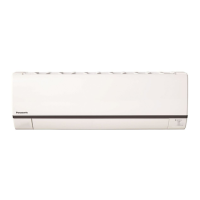


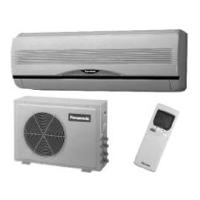
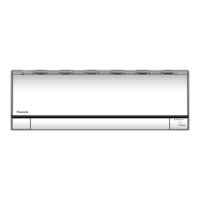


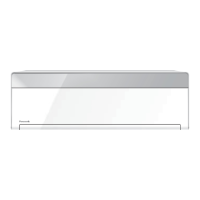

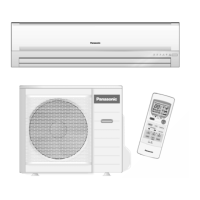
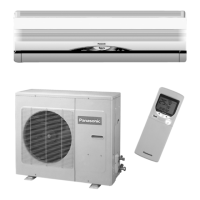
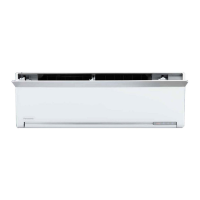
